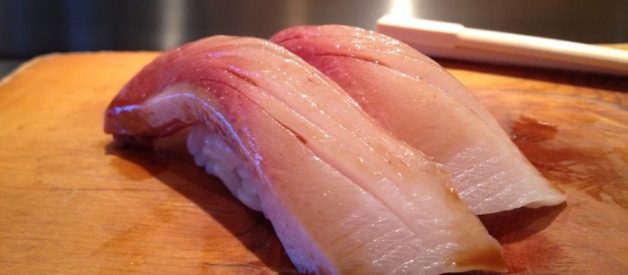Hamachi (?), Hiramasa (??), Kanpachi (??), and Buri (?). You?ve seen them on menus, and you might have ordered them at one point or another. All have characteristic pink flesh with a stark patch of deep red with similar names, so it?s easy to see why they?re confused with each other. In actuality, it?s not so hard to disambiguate.
Hiramasa (Yellowtail Amberjack)
Seriola lalandi Valenciennes
Considered a true Yellowtail, reported as large as 180cm (~6 feet), it?s a large fish found in the Southern Ocean. While farmed, it?s not nearly as popular as hamachi or buri, and the juveniles aren?t as readily caught. Hence, it?s not nearly as easy to find hiramasa on sushi menus compared to the other fish on this list. It has a firm flesh, with a rich and clean flavor, but slightly sweet. If you?ve never had it, it?s worth a try, especially compared to hamachi.
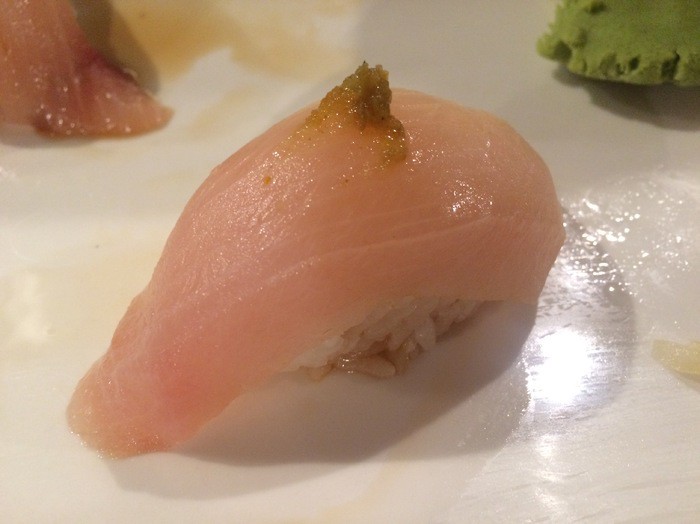 Hiramasa
Hiramasa
Hamachi and Buri (Japanese Amberjack / Yellowtail)
Seriola quinqueradiata
Surprise~! Hamachi and buri are actually the same fish. The name depends on the age of the fish being prepared. It?s the same difference between ordering veal vs lamb. Naming this fish can get more complicated, as different regions in Japan have different names for different sizes of this fish and whether it was caught wild or farmed. But to keep it simple, we?ll stick to hamachi and buri, since you?ll see those names the most often in restaurants.
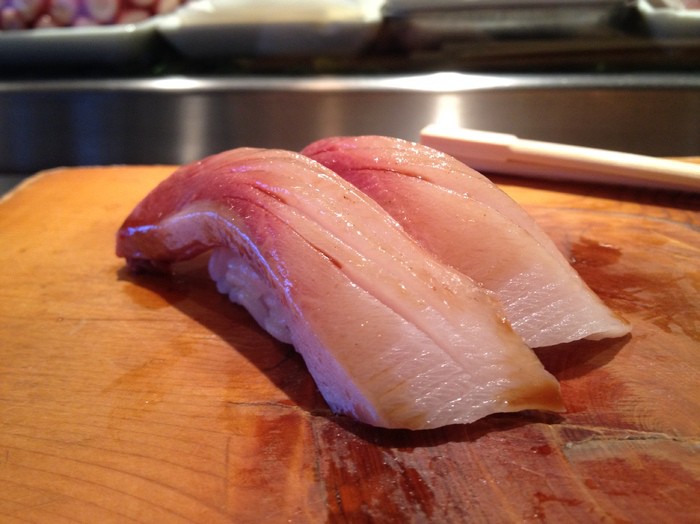 Hamachi brushed with soy sauce
Hamachi brushed with soy sauce
Hamachi is young Japanese Amberjack and is typically farmed. Caught between 20 cm to 40 cm (~1 foot) or about 1 to 2 years in age, it has a soft texture with full-on flavor that leaves you with a citrus aftertaste. If farmed, hamachi doesn?t get as much exercise, so the meat tends to be lighter in color, fattier, and softer than wild ones. Hamachi is a term from the region around Kyoto. Markets around Toyko would refer to it as Inada.
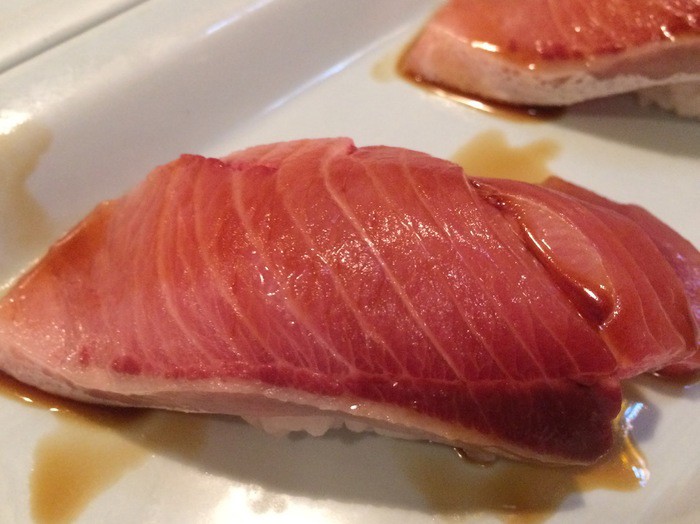 Buri brushed with ponzu sauce
Buri brushed with ponzu sauce
Buri is mature Japanese Amberjack and is typically wild. Caught as 90cm or more (~3 feet) or about 4 or more years in age. When caught and eaten in the fall and winter, the texture is firm, and it?s very oily and flavorful, often served with ponzu as the oil of the fish can repel the soy sauce!
Kanpachi (Greater Amberjack)
Seriola dumerili
Another large fish with a maximum length of 200 cm (6.56 feet), and as an apex predator, it?s a powerful swimmer. Hence, its flesh is firmer than farm-raised hamachi, with a lighter flesh color, and a clean, crisper taste. [1] A fish for later in the year, it?s best consumed in the autumn and winter.
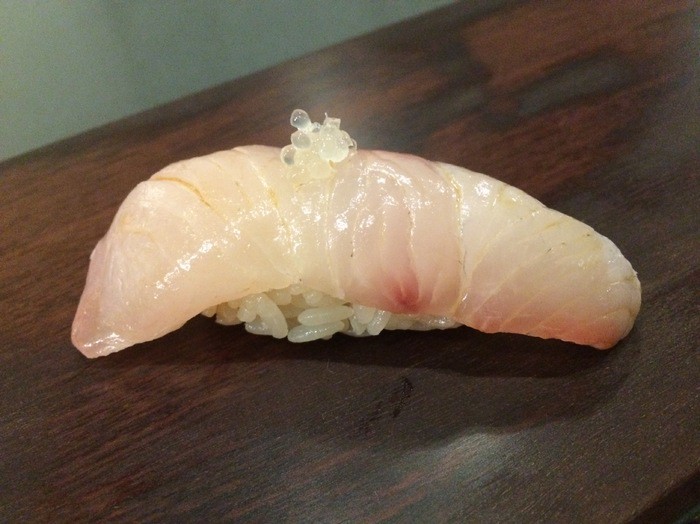
Like the Hamachi/Buri, Kanpachi, also has different names depending on its size, and the prefecture of the market where it?s sold. In the Kochi prefecture, they go by:
- Small Fry: Shio or Chiki
- Medium sized: Akahata or Nairi
- Large sized: Gata or Kojio
- Extra Large sized: Akahana or Ooshio
? Tip time: Look for bloodlines that are vividly red. The bloodlines turn brown when the fish is old. If you see that, politely decline the fish, and never come back again!
Like what you read? Get it in your mailbox:

References
[1] As an apex predator, mature Kanpachi eats other fish that eat toxic algae in coral reefs. As a result, the toxin can accumulate in mature Kanpachi which results in ciguatera poisoning for humans. But fear not, the kanpachi at restaurants are typically farm raise, or juveniles, so they haven?t had time to accumulate the toxins.
- http://www.maff.go.jp/e/foj/chris/vol_03.html
- http://theedibleocean.blogspot.com/2012/04/yellow-tales.html
- https://en.wikipedia.org/wiki/Yellowtail_amberjack
